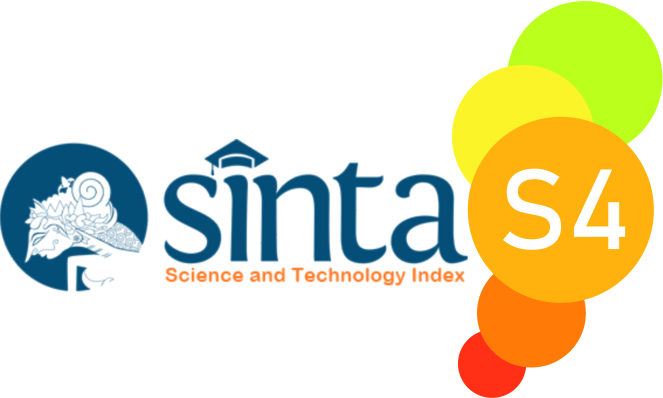Perception of the Varied Lecture Methods and Their Relationship to Tauhid Learning Outcomes of MDTA Class III Students
 ), Syuraini Syuraini(2),
), Syuraini Syuraini(2), (1) Universitas Negeri Padang
(2) Universitas Negeri Padang
 Corresponding Author
Corresponding Author
DOI : https://doi.org/10.24036/spektrumpls.v9i1.111045
Full Text:
 Language : en
Language : en
Abstract
This study aims to determine the students' perceptions of the varied lecture methods, to know the description of students' learning outcomes, and to find out the relationship between students' perceptions of the varied lecture methods and learning outcomes. This research is a correlational study with a quantitative approach. The subjects of this study were third grade students at MDTA Darul Hikmah. The population is 27 people and the sample is taken from the whole population using total sampling technique. The data collection tool in this study was a questionnaire. The data analysis techniques used in the study were percentage statistics and serial correlation. The results showed that the students' perceptions of the lecture learning method varied in the unfavorable category. The learning outcomes of students are also in the unfavorable category with an average score of 56.85 in the semester. The results of the price consultation r, it is concluded that r count is greater than r table, that is, there is a significant relationship between students' perceptions of the varied lecture learning method and learning outcomes.
Keywords: Perception, Learning Methods, Learning Outcomes
References
Arikunto, S. (2016). Prosedur Penelitian: Suatu Pendekatan Praktik. Jakarta: Rineka Cipta.
Fahriati, F., & Syuraini, S. (2018). Hubungan antara Kepedulian Orang Tua dengan Keberhasilan Pendidikan Anak di Jorong Labuai Kabupaten Pasaman Barat. SPEKTRUM: Jurnal Pendidikan Luar Sekolah (PLS), 1(3). https://doi.org/https://doi.org/10.24036/spektrumpls.v1i3.100600
Gulo, W. (2002). Strategi Belajar-Mengajar. Jakarta: Gramedia Widiasarana.
Miftah, T. (2003). Perilaku Organisasi Konsep Dasar dan Aplikasinya. Jakarta: Grafindo Persada.
Prasetijo, R. (2005). Perilaku Konsumen. Yogyakarta: Andi Offset.
Rusman. (2012). Model-Model Pembelajaran. Jakarta: PT Rajagrafindo Persada.
Slameto. (2003). Belajar dan Faktor-faktor yang Mempengaruhinya. Jakarta: Rineka Cipta.
Slameto. (2010). Belajar dan Faktor yang Mempengaruhinya. Jakarta: Rineka Cipta.
Sudjana, N., & Ibrahim. (2009). Penelitian dan Penilaian Pendidikan. Bandung: Sinar Baru Algesindo.
Sugihartono. (2007). Psikologi Pendidikan. Yogyakarta: UNY Pers.
Suseno, N. S. (2013). The Influence of Independence, Size of Public Accountant OfficeToward Audit Quality and Its Impact on Public Accountant Office Reputation. International. Journal of Scientific & Technology Research, 2(3).
Syuraini, S., & Yolanda, Y. (2019). Use of Learning Media in Entrepreneurship Subjects Equality Education Paket C. KOLOKIUM: Jurnal Pendidikan Luar Sekolah, 7(1), 48–52. https://doi.org/10.24036/kolokium-pls.v7i1.18
Walgito, B. (2010). Psikologi Sosial (Suatu Pengantar). Yogyakarta: Andi Offset.
Warni, E. (2010). Hubungan Persepsi Siswa terhadap Metode Ceramah yang Digunakan oleh Guru dengan Prestasi Belajar Siswa pada Mata Pelajaran Fiqih Kelas VIII di MTs Al Muttaqin Pekanbaru. Universitas Islam Negeri Sultan Syarif Kasim Riau. Retrieved from http://repository.uin-suska.ac.id/10915/
Wirdayani, N., & Syuraini, S. (2020). Hubungan Motivasi Belajar dengan Disiplin Warga Belajar dalam Mengikuti Pelatihan Menjahit di PKBM Anarvani Kota Padang. Jurnal Halaqah, 2(3), 259–269. https://doi.org/10.5281/zenodo.3880799
 Article Metrics
Article Metrics
 Abstract Views : 176 times
Abstract Views : 176 times
 PDF Downloaded : 63 times
PDF Downloaded : 63 times
Refbacks
- There are currently no refbacks.

This work is licensed under a Creative Commons Attribution-NonCommercial 4.0 International License.



